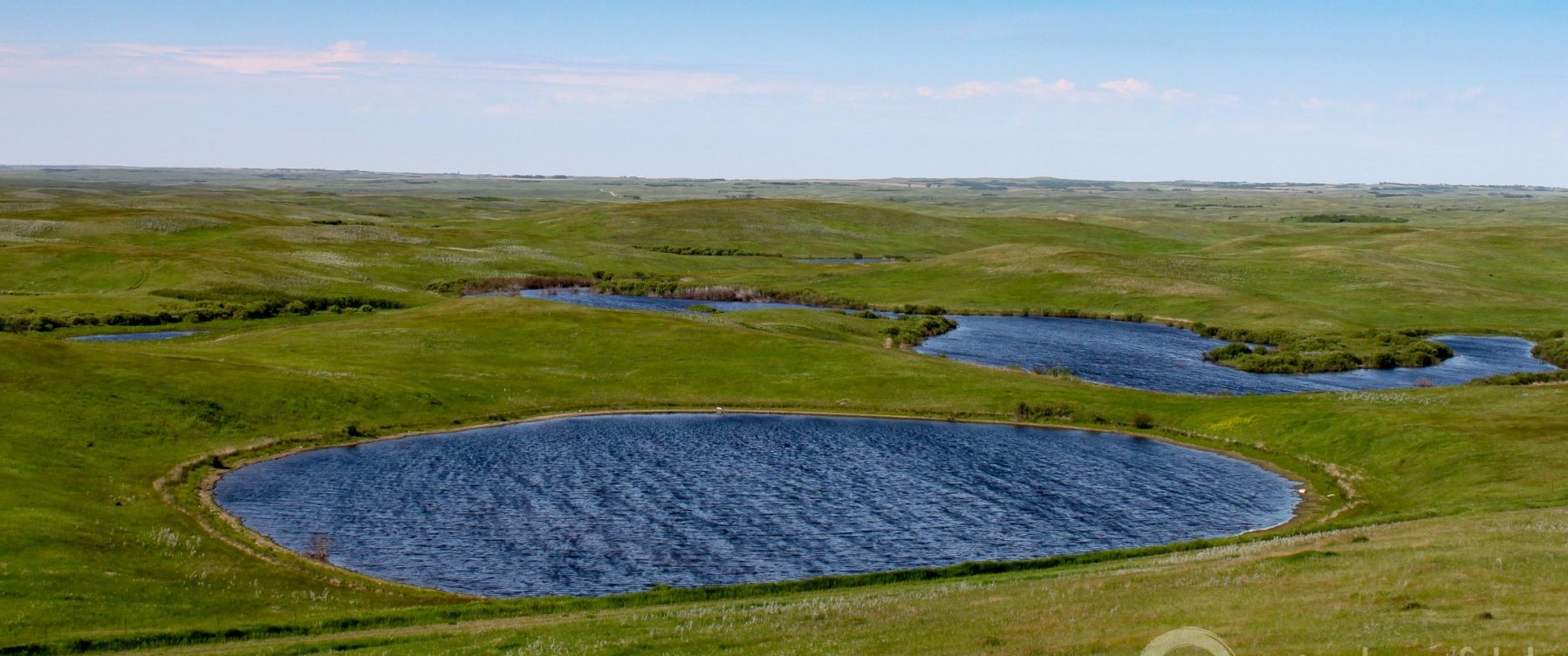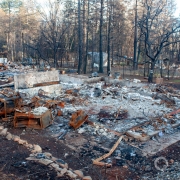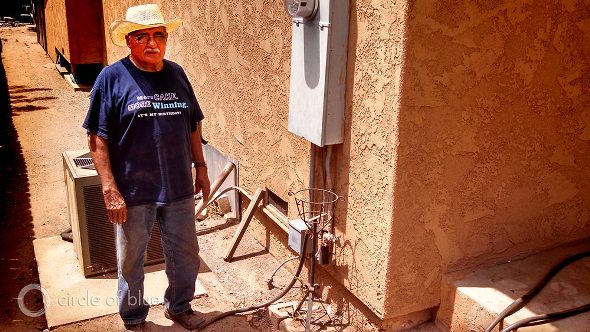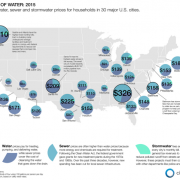Clean Water Rule Repeal Cannot Come at a Pen Stroke
Trump executive order seeks to remove federal protections for many streams and wetlands.

Seasonal water bodies such as the small lakes and wetlands in North Dakota’s Prairie Pothole region would likely lose federal protection if the EPA were to follow the regulatory recommendations in President Trump’s executive order. Photo © Codi Kozacek / Circle of Blue
By Brett Walton, Circle of Blue
When he ordered two federal agencies to review an Obama administration rule that defined which water bodies are regulated by the Clean Water Act, President Trump inserted himself into a debate that has churned for more than three decades.
If the president hopes for a quick resolution through an executive order, he is mistaken, according to law experts. An attempt to withdraw the Clean Water Rule must go through the same process that was used to develop the rule: public comments, hearings, agency response to the comments. That process would take at least a year or two, says William Andreen, a professor at the University of Alabama Law School.
Rescinding the rule will be a “daunting task,” Andreen, an EPA Region 4 lawyer during the Carter and Reagan administrations, told Circle of Blue.
In his executive order on February 28, the president encouraged the U.S. Environmental Protection Agency and the Army Corps of Engineers to consider a narrower interpretation of the law, a move supported by rural lawmakers, farm groups, ranchers, and developers. Opponents see the Obama administration’s Clean Water Rule as violating private property rights. The U.S. Court of Appeals for the Sixth Circuit put the rule on hold in October 2015 while it hears a legal challenge brought by more than two dozen states and farm lobbies.
The proposed repeal is daunting because of the work that went into preparing the rule, Andreen explained. The EPA took three years to build the scientific case that supported its legal argument for which waters contribute to the biological, chemical, and physical health of the nation’s ecosystems. The agency produced a 408-page report that was based on more than 1,200 peer reviewed studies. The agency report was then reviewed by a science advisory board comprised of university professors, state government officials, and industry representatives from the United States and Canada.
The review board commended the EPA’s work. Though it criticized certain provisions such as the use of distance from flowing water to determine regulatory jurisdiction, the board noted that the report provided “an adequate scientific and technical basis for the proposed rule.” The board even asserted that the agency excluded certain water bodies that are worthy of legal protection.
“That science is part of the record,” Andreen said. “Any rulemaking, if it takes a contrary approach, will have to deal with it. The agency will have to refute it and have to show to a court why it shouldn’t pay attention to it.”
If the EPA writes a rule with a narrow interpretation of the law, the agency must contend not only with the scientific evidence but with legal precedent. Trump promoted the Scalia opinion from the Rapanos ruling, a 2006 U.S. Supreme Court case that produced a split judgment about the scope of the Clean Water Act. Scalia’s narrow opinion — that only rivers, streams, and lakes that flow year-round to a navigable water are worthy of protection — is rarely an accepted argument. It “goes against the vast bulk of existing law in this country,” Andreen said.
When it wrote the Clean Water Act more than four decades ago, Congress applied the statue to “navigable waters” which it defined as “waters of the United States.” The ambiguity in those phrases spurred three U.S. Supreme Court cases and an appeal from Chief Justice John Roberts after the Rapanos case for an agency rule to provide the clarity that Congress withheld.
There is broad agreement among the legal community that any revision of the rule is destined for the courts, repeating a pattern established since the first Supreme Court case in the 1980s. For Jeff Kray, an attorney at Marten Law who specializes in Clean Water Act cases, the cycle of lawsuits reflects the failure of Congress to define the terms of the act. “The fundamental challenge is that we have a legislatively created problem that the judicial and executive branches have been trying to work out,” Kray told Circle of Blue.
In the meantime, the EPA and the Army Corps of Engineers still have a law to uphold. They must approve permits for developments that will alter or destroy streams and wetlands. But they will not have an agency rule to guide them. Instead, they will rely on an EPA policy statement written a decade ago.
Ann Carlson, an environmental law professor at the University of California, Los Angeles, argues that in the absence of a rule, the regulatory process leaves agency employees with “significant discretion” in interpreting the act.
“Without the [Clean Water Rule] in place, EPA and the Army Corps will still be required to make determinations about which wetlands they have jurisdiction over and which ones they do not,” Carlson writes on Legal Planet, an environmental law blog. “The repeal of the rule does not mean that wetlands will not be regulated. Instead, the question will continue to be which wetlands are covered by the Clean Water Act. And to make that determination, EPA and the Corps will not have the benefit of having a rule in place.”
To make those determinations the agencies must go case-by-case, a time-consuming, labor-intensive process that the Clean Water Rule sought to shorten. Agency employees slogging through fields and deciding whether the land shows “connectivity” to a stream goes against EPA Administrator Scott Pruitt’s pledge to make regulations more regular. But that is what the administration might end up with.
Brett writes about agriculture, energy, infrastructure, and the politics and economics of water in the United States. He also writes the Federal Water Tap, Circle of Blue’s weekly digest of U.S. government water news. He is the winner of two Society of Environmental Journalists reporting awards, one of the top honors in American environmental journalism: first place for explanatory reporting for a series on septic system pollution in the United States(2016) and third place for beat reporting in a small market (2014). He received the Sierra Club’s Distinguished Service Award in 2018. Brett lives in Seattle, where he hikes the mountains and bakes pies. Contact Brett Walton









